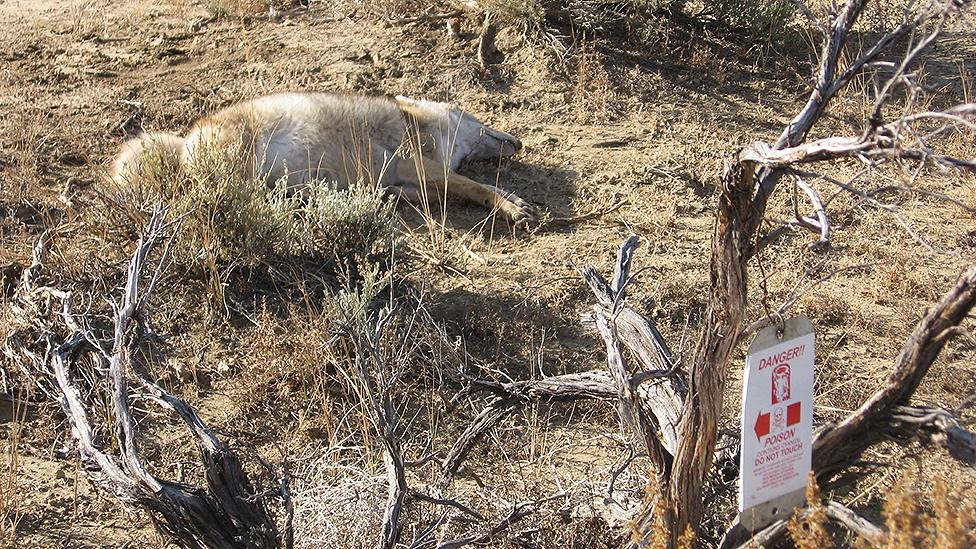Cyanide bombs: US reverses policy on wildlife-killing traps
- Published

Cyanide traps work by spraying poison in the mouths of predators
The US Environmental Protection Agency (EPA) has withdrawn support for so-called cyanide bombs, which are used to kill predators of livestock.
Use of the deadly devices known as M-44s began in the 1960s and was re-authorised by the agency in June, sparking a new backlash.
M-44s have been known to harm humans and kill endangered wild species that are not considered pests to ranchers.
They work by drawing animals with bait then spraying poison into their mouths.
The EPA administrator, Andrew Wheeler, said the "issue warrants further analysis and additional discussions" in order to "ensure US livestock remain well-protected from dangerous predators while simultaneously minimising off-target impacts on both humans and non-predatory animals".
The bombs are meant to kill coyotes, foxes and other animals that prey on livestock.
But the EPA has acknowledged it has also killed hundreds of unintended targets.
The Center for Biological Diversity, which spearheaded a public comments campaign to complain to the EPA, cheered the backtrack.
It called for a "permanent ban to protect people, pets and imperilled wildlife from this poison".
- Published9 August 2019